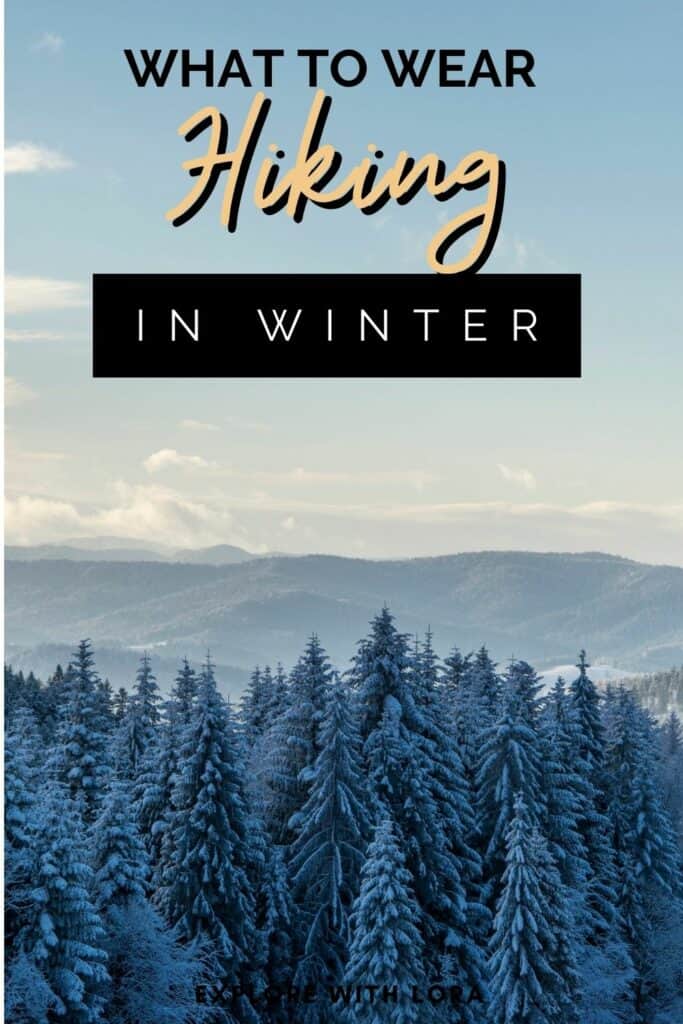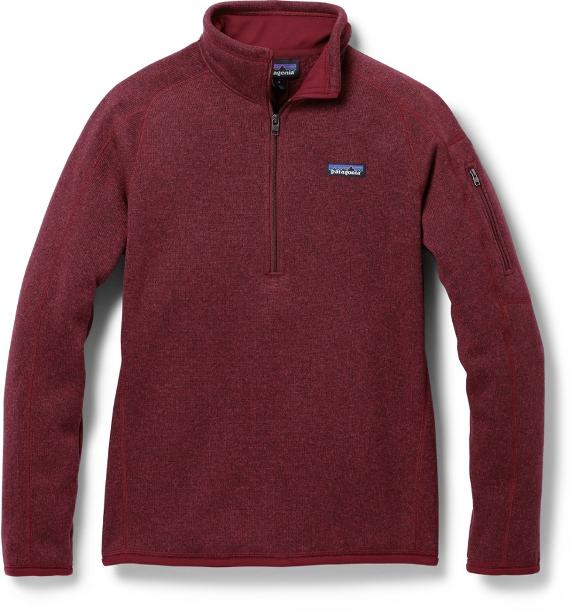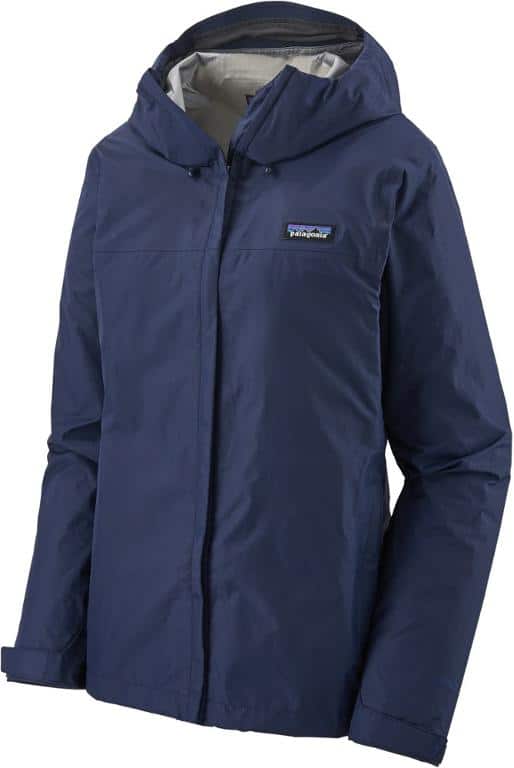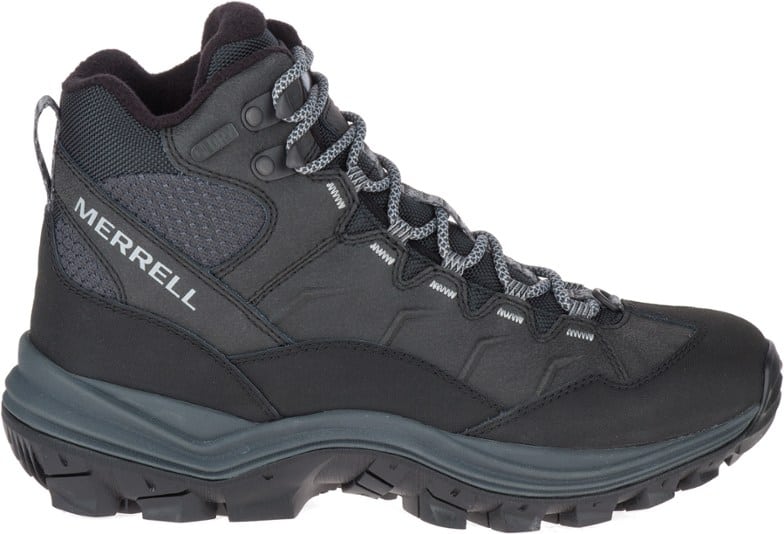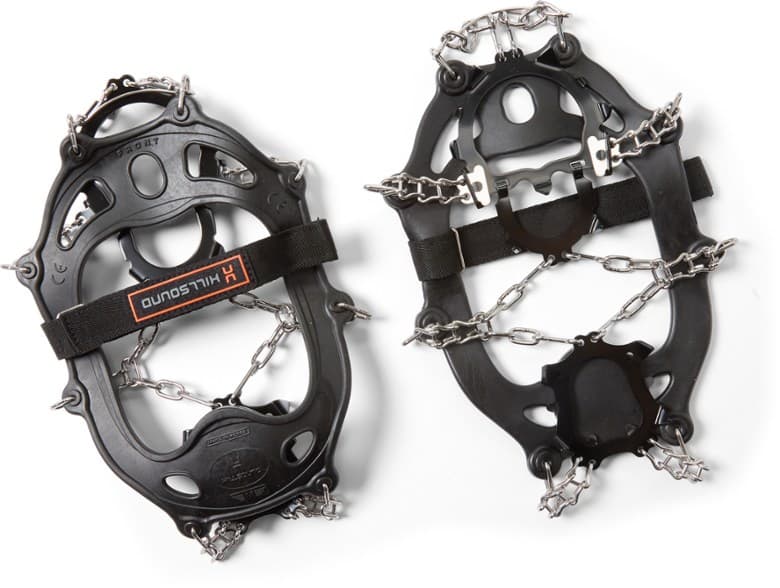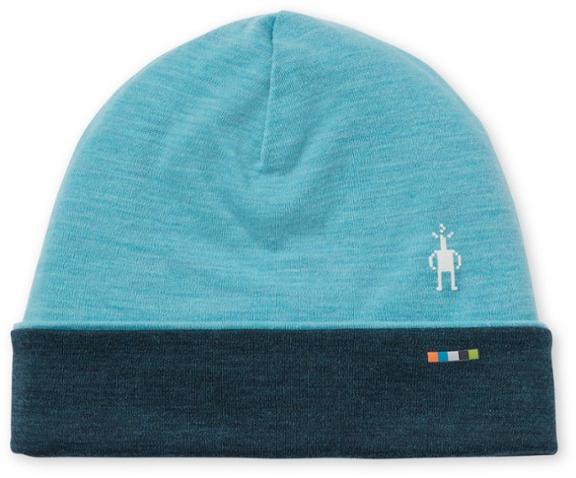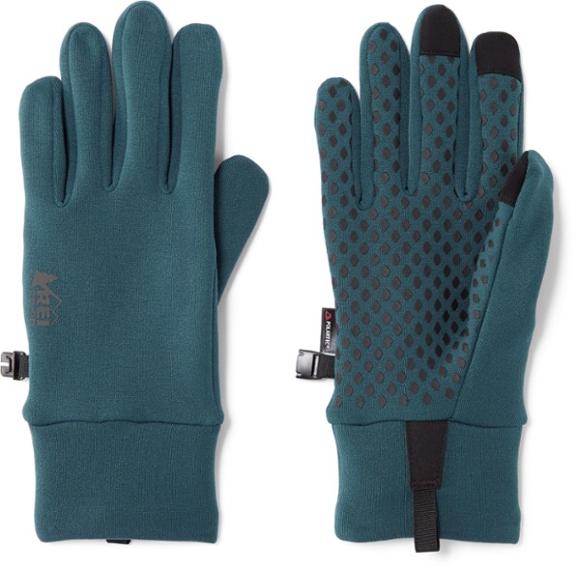This post may contain affiliate links. By clicking and making a purchase through the links, I earn a small commission at no extra cost to you. See my disclaimer for more information. This and display ads allow me to keep the site up to date and give back.
It’s always important to bring the right gear while hiking, but it becomes even more so in winter. While it may seem simple on the surface, what to wear hiking in winter does require some planning.
This Scandinavian proverb sums up winter hiking perfectly: “There’s no such thing as bad weather, only bad clothing.”
Even though I’m from Canada, I used to avoid being outside in winter for extended periods because I couldn’t stand the cold. When I finally got the right winter hiking gear, it changed everything for me. And with such long winters in Canada, it would be a shame to miss so many hiking opportunities!
If you’re wondering what to wear hiking in cold weather, this post will walk you through from top to bottom.
What to wear hiking in winter
Layers, layers, layers
The key to winter hiking apparel is to wear layers that keep you warm and dry – both from the weather and your sweat. Based on the trail and weather conditions, you may need to remove and wear clothing throughout the hike to keep yourself comfy.
One of the most important things for winter hiking is to stay dry. Once you get wet, your hike will become miserable and you run the risk of getting hypothermia.
Base-layer
Proper layering for winter hiking begins with a thermal base layer, which retains a small layer of heat against your skin and dries moisture away if you start to sweat. Materials such as synthetics or merino wool are appropriate.
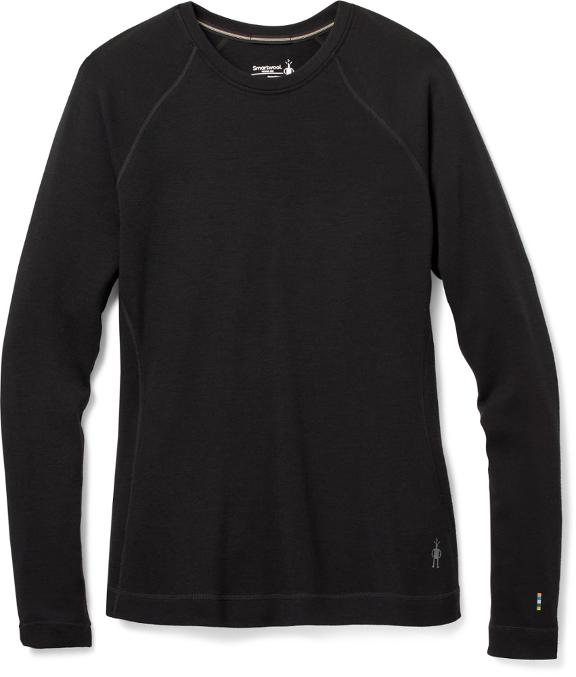
TIp: Avoid wearing cotton. It takes forever to dry once it gets wet, which will leave you feeling damp and cold. On the other hand, synthetic layers like wool not only dry faster but move sweat away from your skin.
When choosing layers, go for a plain color like black. Otherwise, the bright colors may stand out against your other clothing. Unless you want to, of course!
I bring thermal leggings and a long-sleeve top with me EVERYWHERE I travel, and that set of clothing has saved me so many times. Even if you’re traveling to warm countries like Guatemala, you never know when you may end up on a 3000m volcano freezing your butt off.
Mid-layer
The next layer is a mid-layer, which provides the majority of your insulation by holding your body heat and keeping you warm. Down puffy jackets and polyester fleeces are common mid-layers.
I wore this polyester fleece while hiking in Yellowknife, and it kept me toasty warm.
Again, regular cotton sweaters won’t cut it; you’ll want something thick and durable that will dry quickly.
Outer-layer
Lastly, you should have an external shell that is both waterproof and windproof.
Windproof and waterproof jackets with an inbuilt adjustable hood are must-have items during winter hiking. They are known as hard-shell jackets because they lack built-in insulation, which would keep you excessively warm. Instead, they serve to protect you from harsh winds and heavy rain, as well as to retain the heat trapped by your mid-layer clothes.
Tip: Search for jackets with at least two outer pockets for carrying hats and gloves. Waterproof jackets with pit zips offer the most ventilation and breathability.
If it’s a clear and warmer day, you may not need to wear your outer layer, but it’s always a good idea to have it with you. There’s nothing worse than getting caught in the freezing rain unprepared!
The Patagonia Torrentshell is a waterproof/breathable polyester with durable water repellent coating that makes it rain and snow waterproof. It also features storm flaps, a 2-way adjustable hood, and pit zips.
Winter hiking pants
Most hikers prefer soft-shell trousers or cargo pants in the winter as they’re more breathable and form-fitting than full zip rugged shell pants. However, you should still carry a pair of hard-shell trousers for protection against heavy rain and high winds.
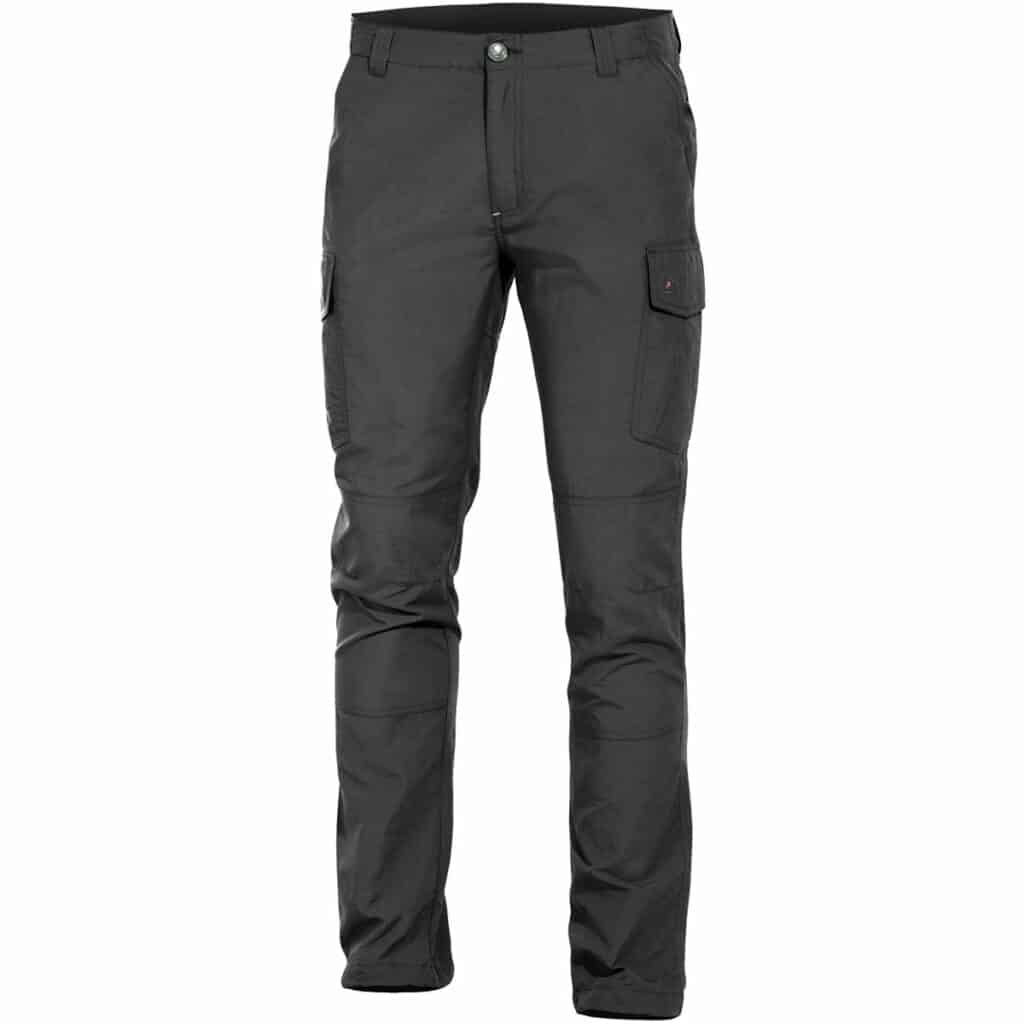
Keeping your feet warm
Keeping your feet warm and dry is one of the most important aspects of winter hiking. Once your feet are cold, so is the rest of you. I suffered through cold Newfoundland winters wearing cheap winter boots for years until I finally invested in quality ones, which changed everything.
Plus, the terrain of winter hiking is much more challenging, so you need something that can grip onto the snow and ice to protect you from slipping.
Insulated winter boots
Winter hiking boots must be rated for temperatures of 20 degrees below zero Fahrenheit or lower. For below-treeline hiking, single-layer insulated boots with the equivalent of 400 grams of Thinsulate insulation or the equivalent are suitable.
I’m a big fan of Merrell’s. These waterproof hiking boots are designed to tackle trails in the cold and snow, keeping you warm and dry with low-bulk insulation and waterproof uppers.
Warm socks
To go with your winter hiking boots, you’ll need a quality pair of warm socks that will keep your feet dry. You can’t get away with regular socks; you need something with thermal protection.
I swear by merino wool socks. They have thick cushioning that will keep your feet warm but are naturally breathable and odor-resistant.
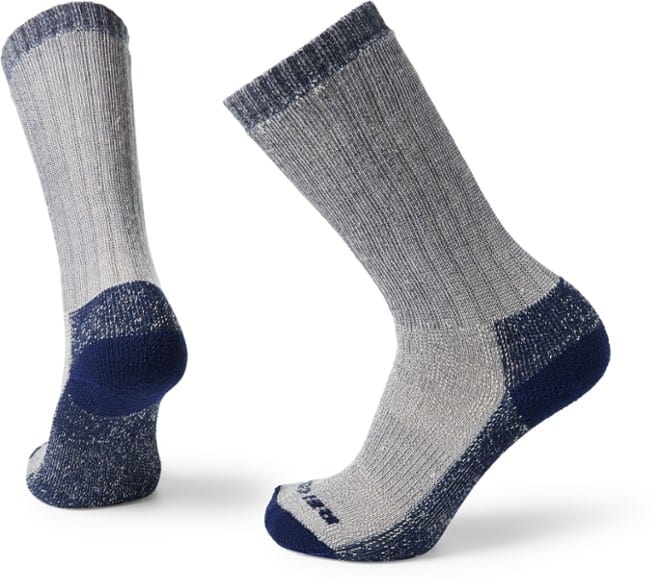
Some winter hikers typically wear a heavier wool sock, but this is a matter of personal taste. Sock liners are optional but can be helpful if you are sensitive to blisters.
Whatever combination you choose, ensure there is enough room in your boots for your toes to wiggle around, as this improves blood circulation and foot warmth.
While hiking in Yellowknife during winter, I made the mistake of wearing too many layers of socks which actually cut off my circulation and made my feet frigid!
It’s important to keep your feet dry, so bring an extra pair of socks in your day pack in case your feet get wet.
Microspikes or crampons
The terrain becomes more challenging in the winter, especially if you choose a longer and steep route or go backcountry hiking.
The last thing you want to do is slip on ice, which microspikes or crampons can help you avoid.
These crampons from Hillsound are a solid choice, designed to handle rugged terrain and winter conditions.
Hats, gloves, and scarfs
Hats
For long winter hikes, a minimum of two hats are advised: lightweight wool or synthetic hat for high exertion sports, and a warmer, heavier weight hat for later in the day when temperatures drop.
This merino wool beanie is perfect. It’s thin and lightweight, so you can easily carry it in your pocket or bag, and it won’t make you sweat while hiking with it.
If you want to wear your hair in a ponytail, or just don’t like the beanie look, earmuffs or a SmartWool headband are also a great option.
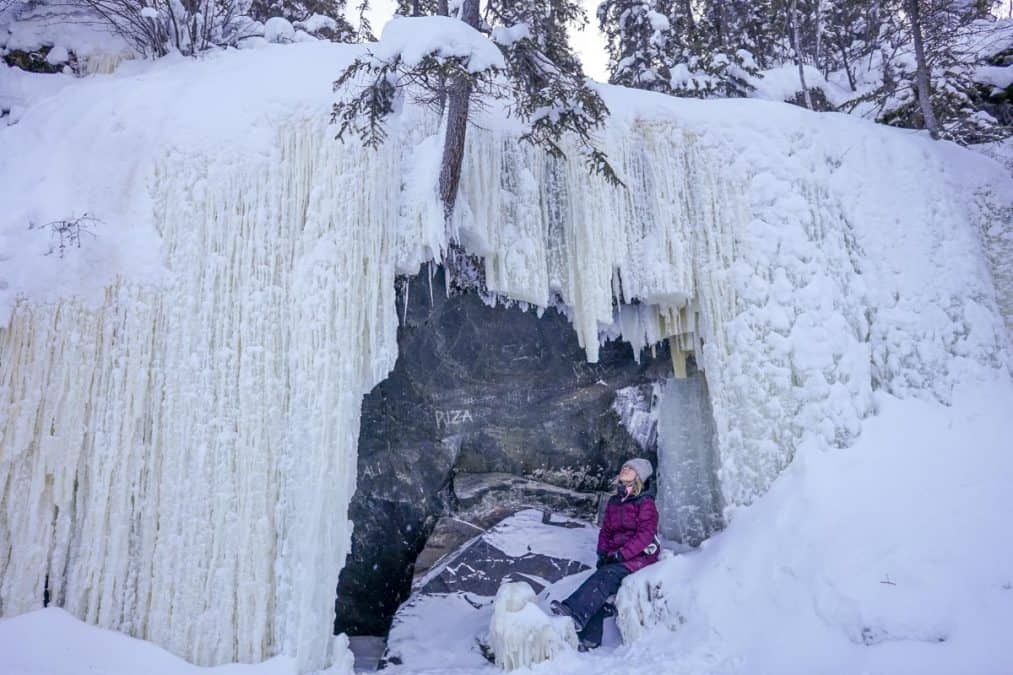
Gloves
Most winter hikers will bring at least two pairs of gloves, but sometimes even more if your hands tend to sweat.
Mitts are warmer than gloves, but gloves are more flexible. One compromise solution is to wear an insulated glove inside a waterproof shell mitt to give mobility and warmth.
Choose a modular pair of gloves with an outer waterproof shell and an inner insulating liner. These Polartec fleece gloves from REI will keep your hands warm without being bulky. They are also touchscreen compatible and made from sustainable materials.
The second pair of gloves is usually lighter in weight and worn during hiking when your body heats your hands and keeps them warm. Soft-shell gloves are preferred over medium-weight fleece gloves because they trap less snow and are more breathable.
I also love buffsfor keeping me warm on winter hikes. You can use it around your next, but also pull it up over your face quickly to avoid being exposed to cold wind.
Tips for winter hiking

Stay moisturized. The cold, dry weather can make your lips crack quickly, so make sure to bring a quality lip balm like Burt’s Bees in your bag.
Pack Hand and feet warmers. While the proper winter gear should keep you warm throughout your hike, sometimes your hands and feet just get cold (especially if you accidentally get wet). In this instance, these hand warmers can be a life-saver.
UV Protection. Just because it’s winter doesn’t mean you don’t need UV protection. In fact, the sun reflecting against the snow makes it quite powerful. While winter hiking, you’ll want to apply 50+ UV sunscreen to any exposed areas on your face and protect your eyes with a quality pair of polarized sunglasses.
Pack a headlamp. In winter you’ll have fewer daylight hours, especially if you’re in the northern part of Canada in the winter. It’s always a good idea to be prepared to hike in the dark by packing a headlamp with fresh batteries. You won’t want to end up like me lost in the jungle of Dominica.
Pack a daypack with the ten essentials. While hiking in the winter, you’ll want to bring a lightweight hiking bag with you to keep extra supplies and the essential items you need for any day hike.
Pack warm drinks: Bring an insulated bottle with your favorite hot beverage to sip on when you take a break. There’s nothing more comforting than a hot drink when you’re cold, and the warmth will go a long way!
If you’re driving to hiking trailheads, make sure to keep your car packed with basics – a snow brush, a shovel, extra blankets, food, water – just in case of emergency!
Now that you’re geared up for winter hiking, get inspired with these beautiful winter hiking destinations in Canada:
- Things to do in Toronto in Winter
- Best places to visit in Ontario in winter
- Top things to do in Yellowknife in winter
